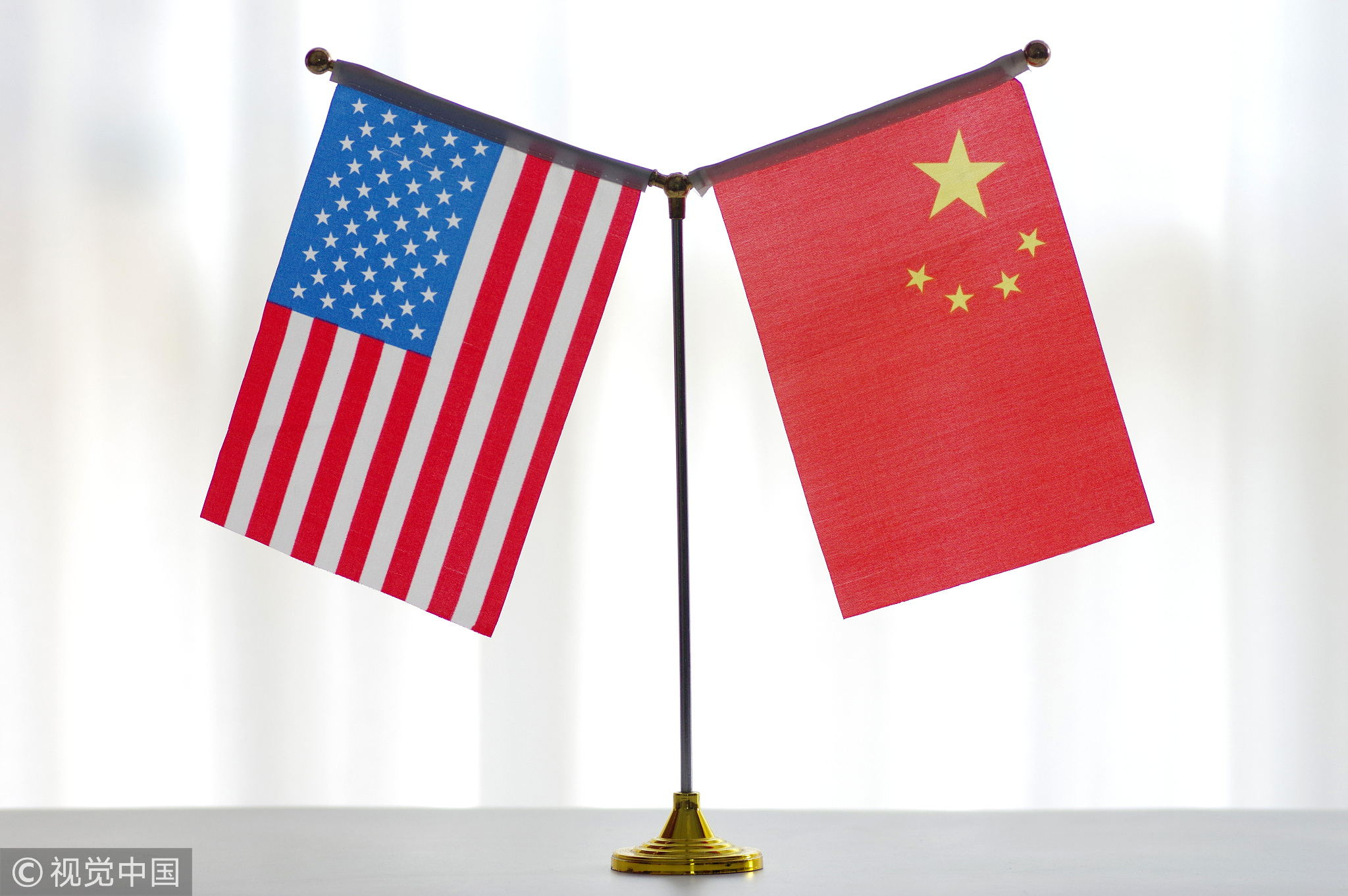
Opinions
12:55, 09-Dec-2018
Opinion: Trump's 'trade wall' only blocks the U.S.
Updated
14:20, 13-Dec-2018
Xu Chuanbo

Editor's note: Xu Chuanbo is a PhD candidate at the Graduate School of Chinese Academy of Social Sciences. The article reflects the author's opinion and not necessarily the views of CGTN.
The 14th Round of Negotiations of China-Japan-Republic of Korea (ROK) Free Trade Area (FTA) was recently held in Beijing. The three countries have conveyed to the outside world the willingness to go hand-in-hand and promote the establishment of the FTA.
The first round of negotiations on the FTA was held in Seoul in March 2013, but it has not made much progress since then. The important reason is that there are many contradictions between the three countries. But in the past six months, all three parties have repeatedly expressed their willingness to accelerate negotiations.
In May this year, during the seventh China-Japan-ROK trilateral summit, the three countries issued a joint declaration reaffirming that they will further accelerate the China-Japan-ROK FTA negotiations and strive to reach a comprehensive, high-level, and mutually beneficial FTA.
On May 8, Chinese Premier Li Keqiang visited Japan and on October 25, Japanese Prime Minister Shinzo Abe visited China. During their visits, the leaders from both sides reached a consensus on advancing the negotiations on the China-Japan-ROK FTA.

An officer adjusts China's national flag before the ASEAN Plus Three (APT) Summit in Singapore, November 15, 2018. /VCG Photo
An officer adjusts China's national flag before the ASEAN Plus Three (APT) Summit in Singapore, November 15, 2018. /VCG Photo
"Trump's shock" is the reason why there has been such significant progress in the China-Japan-ROK FTA.
Since the beginning of this year, Trump administration has continuously launched a trade war against China and Japan. The U.S.' intention is clear: to maximize its own interests at any cost. For a long time, it has been flaunting the benefits of the so-called "Western Liberal Camp."
But this time, the U.S. has pulled away from the last layer of the fig leaf, and nakedly termed it as "America first." To this end, it has even left behind Japan, its hardcore ally. This situation has undoubtedly prompted Japan to "reverse" and instead seek to strengthen cooperation with China.
The U.S. once had a strong influence on Japan. It has been repeatedly thwarting the political career of those top-level Japanese politicians who intended to establish equal diplomatic ties with the United States. In September, Abe was re-elected as Japan's prime minister for the third consecutive term, and with this, his dominance was unprecedentedly consolidated. This has helped Japan to get rid of the U.S.' control to a certain extent, paving Japan's way to participate in economic and trade cooperation negotiations with China actively.
According to an IMF forecast, the GDP of China, Japan, and the ROK in 2018 will stand at 13.46 trillion U.S. dollars, 5.07 trillion U.S. dollars, and 1.66 trillion U.S. dollars respectively, the total of which reaches up to 20.19 trillion U.S. dollars. While the U.S.' GDP is predicted at 20.51 trillion U.S. dollars. It can be seen that the overall strength of the three countries' GDP has been comparable to that of the U.S.
The total GDP of the three countries accounts for more than 20 percent of global GDP and more than 70 percent of Asia's GDP. Once the three-nation free trade zone is established, it will become one of the world's important regional economic groups. More importantly, the overall economic development of China, Japan, and the ROK is relatively high, which means that they will drive East Asia and the world economy in the future.

VCG Photo
VCG Photo
For China, the China-Japan-ROK FTA is an important fulcrum for the development of foreign trade, ensuring that China will mitigate the threat of U.S. economic and trade sanctions to a certain extent. China once signed free trade zone agreements with the Association of Southeast Asian Nations and the ROK respectively.
Once the China-Japan-ROK FTA is established, the three will be connected to each other to promote China's economic and trade center in East Asia and Southeast Asia. Ironically, the U.S. government's trade war has promoted China's foreign economic and trade development. Trump's "Trade Wall" blocks itself at last.
In fact, Trump's move was somewhat similar to Napoleon's. Napoleon wanted to adopt trade embargo to trap Britain by blocking trade between the European continent and the UK. But the French mainland allies and affiliated countries separated themselves from France. It also caused a huge blow to the French economy, laying the groundwork for the fate of its ultimate failure. Trump is presumably following the footsteps of Napoleon.
Today, it is recognized that the world economic center is shifting to the Asia-Pacific region and especially East Asia. Since China plays a key role in the economy of East Asia, the Trump administration will be very likely to suffer the fate of failure if it continues to block China with its "Trade Wall" policy.
(Cover photo: Kazuyuki Yamazaki (L), senior deputy minister of the Ministry of Foreign Affairs of Japan, Wang Shouwen (C), China's vice commerce minister and Yoo Myung-hee (R), director general of the Ministry of Trade, Industry, and Energy of the ROK, attend the 14th Round of Negotiations of China-Japan-ROK FTA in Beijing, December 7, 2018. /CGTN Photo)
(If you want to contribute and have specific expertise, contact us opinions@cgtn.com)

SITEMAP
Copyright © 2018 CGTN. Beijing ICP prepared NO.16065310-3
Copyright © 2018 CGTN. Beijing ICP prepared NO.16065310-3